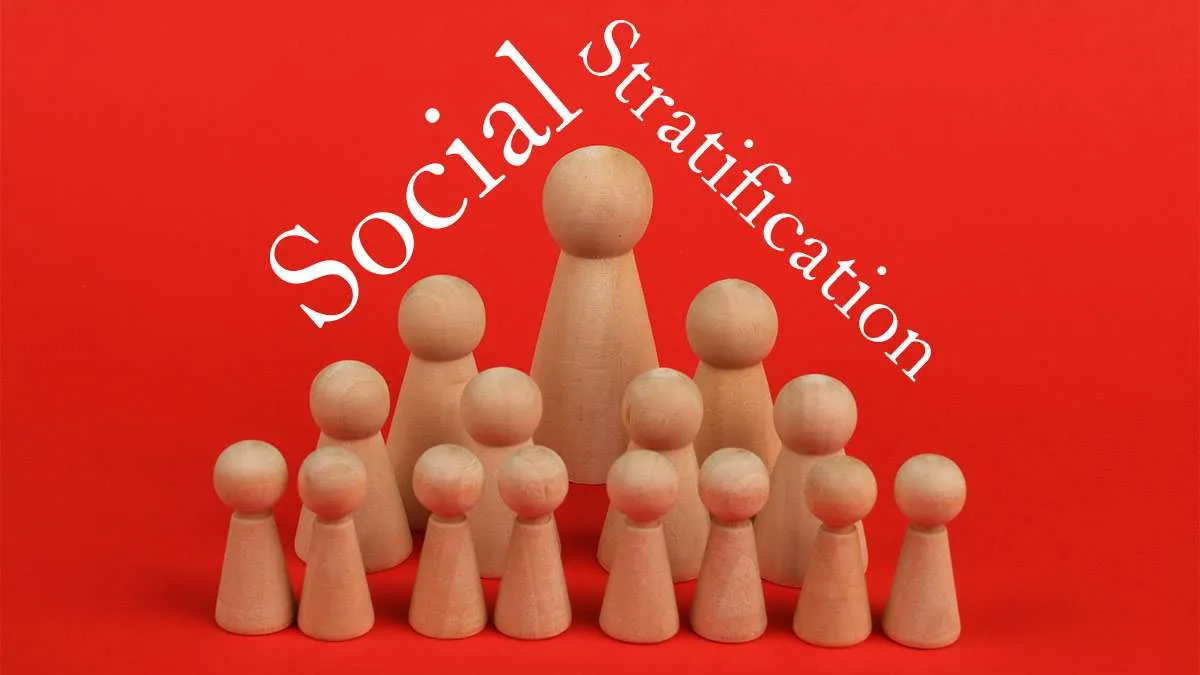Social Stratification Definition
Social stratification refers to the structured hierarchical arrangement of groups within a society based on cultural, social, and political factors such as social class, gender, race, and religion. It is a ranked order on groups within society that becomes institutionalized into our societal structure, resulting in what social scientists call systemic inequality.
Our definition is similar to how many in sociology have defined social stratification. You will notice similarities between our definition and that on SociologyDictionary.org.
The Sociology Dictionary definition of social stratification is, “A system of inequality based on ranking people or groups based on power, prestige, or wealth.”
SociologyDictionary.org
One addition we make in our definition is that we include the idea that social stratification results in systemic inequality through the process of institutionalization.
Inequality in Society
Sociologists have adopted specific language for talking about inequality and stratification. The term ‘inequality’ itself, can have different meanings depending on the context.
Inequality refers to a social, political, or economic system where some people have higher levels of status, power, or financial assets than other people. We might argue that ALL societies have inequality. We might even argue that inequality is not inherently bad. For instance in capitalist societies, the economy depends upon competition for resources. Therefore, inequality is a necessity for the existence of capitalism.
Even in societies without capitalist economies, inequality is prevalent. Just consider the head of state of any non-capitalist country, this person has more power than others, representing inequality. Once again, we could argue that truly merit-based inequality is not a problem. Unfortunately, the inequality we observe through research is not merit-based and is actually structural.
Structural Inequality vs. Merit-based Inequality
Structural inequality refers to the ways in which societal structures and institutions perpetuate unequal outcomes for certain groups of people based on their race, gender, social class, and other factors beyond their control. In contrast, merit-based inequality is the idea that individuals who work harder, have more skills or talents, or make better choices will achieve higher social status and greater access to resources.
While merit-based inequality suggests that individuals are responsible for their own success or failure, structural inequality recognizes that individuals are often limited by the opportunities and resources available to them. For example, a person from a low-income family may have limited access to quality education, healthcare, and other resources that are critical for success in a merit-based society. Similarly, a person of color may face systemic racism and discrimination that limits their opportunities for advancement, regardless of their individual abilities and efforts.
Structural Inequality
Structural inequality can be perpetuated by policies, practices, and cultural attitudes that reinforce societal biases and inequalities. For example, redlining, the practice of denying loans or other services to people in certain neighborhoods based on their race or ethnicity, has led to persistent housing segregation and limited opportunities for wealth accumulation for people of color. Similarly, gender-based pay disparities, which are rooted in discriminatory hiring practices and cultural attitudes about women’s abilities and roles in the workplace, perpetuate structural inequality for women.
Merit-based Inequality
In contrast, merit-based inequality assumes that everyone has equal opportunities to succeed, regardless of their backgrounds or circumstances. However, this assumption ignores the reality that individuals are often limited by factors beyond their control, such as their race, gender, and social class. Ultimately, addressing structural inequality requires recognizing and addressing the systemic barriers that limit opportunities and resources for certain groups of people, rather than simply relying on individual efforts and abilities to overcome those barriers.
Examples of Social Stratification in the United States
In the United States, there are various forms of social stratification that have persisted over time, including class, race, and gender stratification.
Class Stratification
Class stratification in the US is primarily based on income and wealth, with the wealthiest individuals occupying the top of the social ladder, and the poorest individuals occupying the bottom. Wealth disparities have continued to widen in recent decades, with the top 5% of Americans owning two thirds of the country’s wealth. This has led to a growing divide between the wealthy and the rest of society, with limited opportunities for social mobility.
Racial Stratification
Race and ethnicity are also significant factors in social stratification in the US, with Black and Hispanic Americans facing significant disadvantages compared to white Americans. Studies have shown that racial and ethnic minorities are more likely to live in poverty, experience lower levels of educational attainment, and face discrimination in the workplace and other areas of society. These disparities have been perpetuated by systemic racism, which has shaped US history and continues to have a lasting impact on society today.
Gender Stratification
Gender is another important factor in social stratification in the US, with women facing discrimination and earning less than men in many occupations. Women are also underrepresented in leadership positions and face barriers to advancement in many fields. These gender disparities have been challenged by movements for gender equality, such as the feminist movement, but they persist to this day.
Final Thoughts on Social Stratification
Understanding social stratification is important because without a deep understanding of these hierarchical arrangements, certain groups continue to receive less opportunities for success. The myth of the American Dream is an example of the consequences that stem from a lack of understanding around social stratification. This myth assumes that inequality in the US is merit-based, meaning anyone who works hard can pull themselves up by their boot straps and find financial success and happiness.
As discussed in this article, that is simply not the case. Due to historical context, politically- and religiously- driven ideologies, and more, inequality in the US is stratified by gender, race, and social class. By acknowledging the ways in which social inequality is structures, and mot merit-based, we can better progress toward a more equitable future for all.







